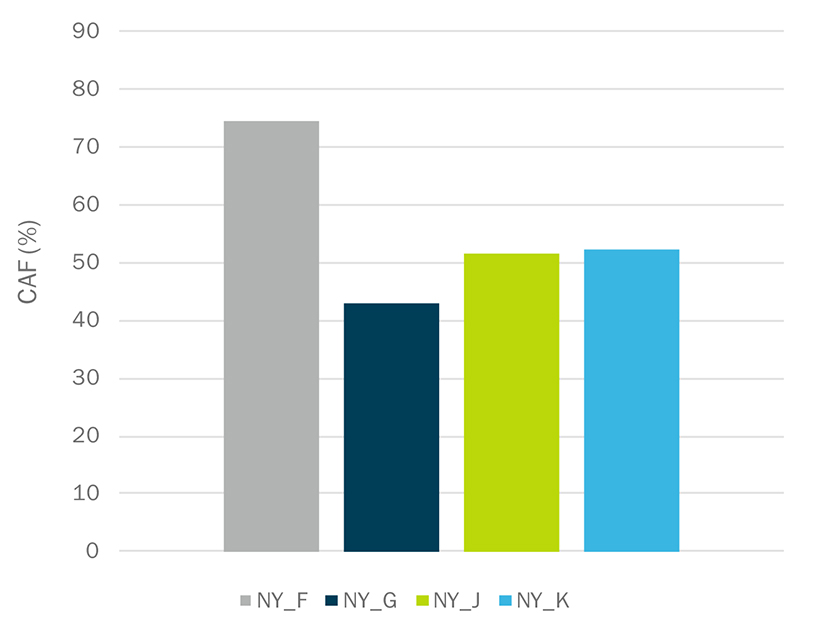
Capacity accreditation factor results for NYISO special-case resources when start times are staggered
| NYISONYISO last week briefed the Installed Capacity/Market Issues Working Group on its efforts to improve capacity accreditation by modeling natural gas constraints, special-case resources (SCRs) and correlated derates.
The three projects are intended to produce more accurate capacity accreditation factors and capacity accreditation resource class (CARC) calculations, as well as capture metrics not represented in installed reserve margins (IRMs) and locational capacity requirements (LCRs) in resource adequacy models. (See “Capacity Accreditation Kickoff,” NYISO Presses Onward with DER Revisions; Stakeholders Struggle to Keep up.)
Current models do not identify and quantify natural gas constraints; sufficiently align SCR expected performance and obligations with NYISO’s expectations; nor include attributes like functionally unavailable capacity from generators during peak conditions.
NYISO’s work will involve identifying individual gas-only units’ characteristics and partnering with neighboring RTOs to develop methodologies to better identify and quantify gas pipeline constraints.
Currently IRM/LRM models do not properly reflect SCR performance, so these resources cannot be treated as a separate CARC. NYISO will test different ways to stagger zonal SCR activations in the modeling, as initial analyses showed that doing so lowered loss-of-load expectations.
In response to stakeholder questions, the ISO made a point to note that changes to the design of the SCR program itself are not within the scope of the project.
NYISO will also address potentially over-crediting emergency generators that are functionally unavailable during peak times of high temperatures and humidity, a problem identified by Potomac Economics.
That involves evaluating incorporating water temperature and humidity into IRM/LCR models, as well as assessing whether dependable maximum net capability tests should be updated to better reflect resource adequacy values for capacity-limited resources.
DER Aggregation Registration
NYISO also presented stakeholders proposed updates to the distributed energy resource Aggregation Manual, which detail the requirements developers must follow to successfully register as a DER aggregator.
Along with relevant transmission and data paperwork, prospective aggregators must provide two “operational contacts” whom NYISO can contact at any time for operational support.
The ISO plans to begin accepting registration packets by April 28.
